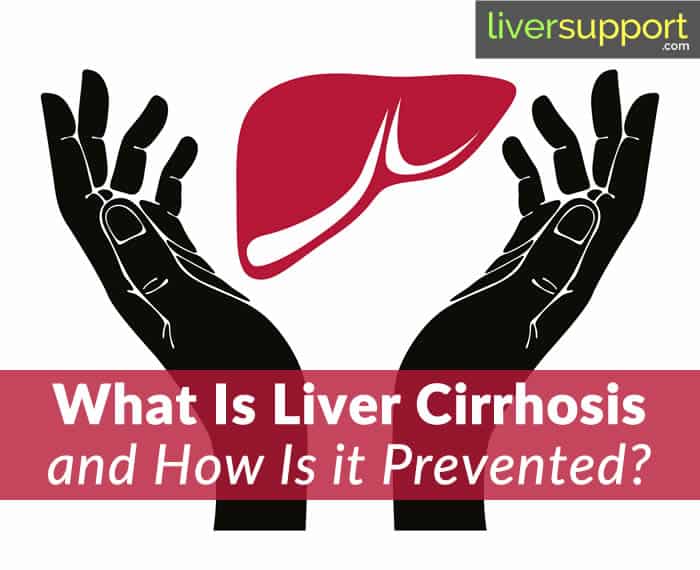
Previous
4 Foods That Cleanse Your Liver

Next
5 Ways to Reduce Liver-Related Gas
What Is Liver Cirrhosis and How Is it Prevented?
Liver disease, regardless of the cause, is considered to take place in four basic stages. Find out how you can prevent liver cirrhosis.
The liver is a critical organ that is intricately involved in many necessary biological functions. There are several conditions and factors that damage liver cells and tissues, including infections from Hepatitis A, B and C, non-alcoholic fatty liver disease (NAFLD), chronic exposure to environmental toxins, chronic, long-term alcohol consumption and a poor diet, often accompanied by being overweight or diabetes. When these things damage the liver, the liver repairs the damage to its own cells. As this insult to the liver tissue happens repeatedly over time, however, scarring begins to form. This scarring is called cirrhosis, a serious condition that inhibits blood flow through the liver, negatively impacting the liver’s ability to function.
4 Stages of Liver Disease
- Initial Stage – During this stage, the liver tissue experiences inflammation in the cells and bile ducts. This inflammation causes abdominal pain and itching in and around the liver (the upper right quadrant of the abdomen, just under the ribs). Untreated, this eventually leads to tissue damage in the liver.
- Fibrosis of the Liver – Often, the fibrosis stage is when symptoms begin to present. In this stage, damage and scarring of the liver tissue begins to impede normal blood flow through the liver, and liver function begins to suffer for that. Depending on the condition(s) affecting the liver, treatment may be able to heal or prevent further progression of the disease. Often, corrective action is enough to return the liver to full function.
- Cirrhosis of the Liver – When fibrosis continues over time, cirrhosis, or permanent scarring of the liver begins to significantly block the blood flow through the organ. At this point, the condition is serious and the overall health begins to suffer significantly. Symptoms begin to appear as liver function declines enough to impact overall health and well-being. Treatments at this stage typically focus on managing the symptoms and preventing further deterioration of the liver function.
- Advanced Liver Disease – In the case of advanced liver disease, the liver has reached total failure and damage from cirrhosis has become extensive. Immediate medical care is necessary and at this stage the patient is terminal.
How to Prevent Cirrhosis
Preventing cirrhosis of your liver, or liver scarring, is often accomplished by corrective action as soon as symptoms appear.
Corrective action may mean:
- limiting or stopping alcohol consumption
- following a healthy diet
- losing weight
- removing or limiting toxins and chemicals from your immediate environment
Because your liver is crucial in digestion and the metabolism of fats and carbohydrates, a poor diet high in fat and carbs is extremely damaging to your liver. Likewise, being overweight, obese or diabetic significantly increases the risk of inflammation and damage to your liver.
Milk Thistle and Turmeric
Supplementation can also significantly aid in reducing damage to liver tissue and in regaining liver function. Milk thistle inhibits the binding of toxins to the liver cells, reduces inflammation in the liver cells and detoxifies the liver. Because of all of its liver protective qualities, milk thistle is historically the most used single herb in treating liver conditions. UltraThistle, the most powerful form of milk thistle, has been shown to be up to 20x more powerful in protecting the liver and acting as an antioxidant, antiviral and anti-inflammatory agent. It also been shown to provide faster functional and structural rebuilding of liver tissue and cells.
Turmeric 95 is also a powerful anti-inflammatory agent, containing 95% curcuminoids, the most powerful form of turmeric on the market. These curcuminoid compounds reduce inflammation, stimulate liver and kidney function, improve bile production and aid in digestion.
Florida Hospital. (2016). Stages of liver disorder. Florida Hospital. Retrieved on 9/20/16 from https://www.floridahospital.com/liver-disorder/stages.
Mayo Clinic. (2016). Cirrhosis. Mayo Clinic. Retrieved on 9/19/16 from http://www.mayoclinic.org/diseases-conditions/cirrhosis/symptoms-causes/dxc-20187350.
Medline Plus. (2016). Cirrhosis. Medline Plus. Retrieved on 9/20/16 from https://medlineplus.gov/ency/article/000255.htm.
Medscape. (2016). Factors related to fatigue in patients With cirrhosis before and after liver transplantation. MedScape. Retrieved on 9/20/16 from http://www.medscape.com/viewarticle/757995.
NIH. (2016). Cirrhosis. National Institute for Diabetes and Digestive and Kidney Disease. Retrieved on 9/19/16 from https://www.niddk.nih.gov/health-information/health-topics/liver-disease/cirrhosis/Pages/facts.aspx.







Nofeed back..curiosity about posts transplant going on 27 years. my bone density requires the IV shot ? once a year.Osteoporosis a given. necrosis has taken its toll hip replacements,joint pain chronic.Is this bone density properties more relevant with older post liver transplants’?correlates with long time on prednisone,steroids. just another side effect. I’d rather not have -3point7.but I do.Extrapolate from 0 , my loss of muscle strength hampers my mobility. Side effects are the down side of many diffident types of meds that has given longevity of my quality of my life /living.For that I am truly blessed & grateful. Please help me find a support group on line. Thanks for all the insightful information on helpful holistic ways to try new thing’s. All these years,I have created my own Elixir.Borscht, is but one ingredient on a regular basis. Thank you for being there,you make me matter,concerning our life, constant change happen year’s,ago,it feels like yesterday on so many levels.Only the presence of now matters to me ,constant change
Ago,
Olga, have you looked into this online forum http://forums.delphiforums.com/hepatitiscen/start?